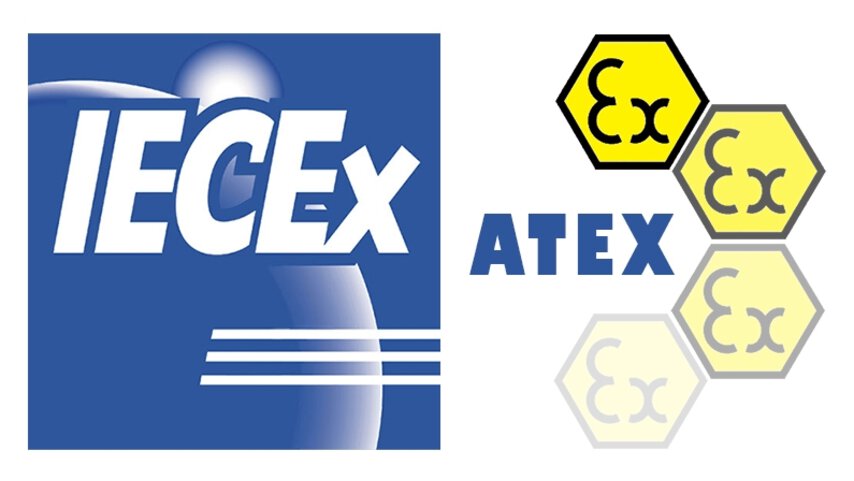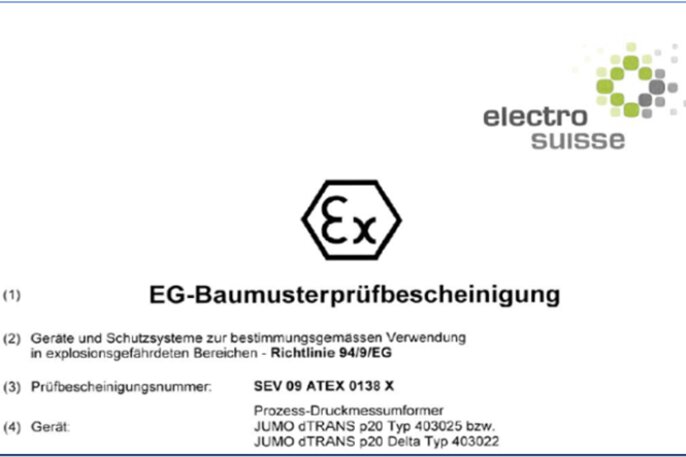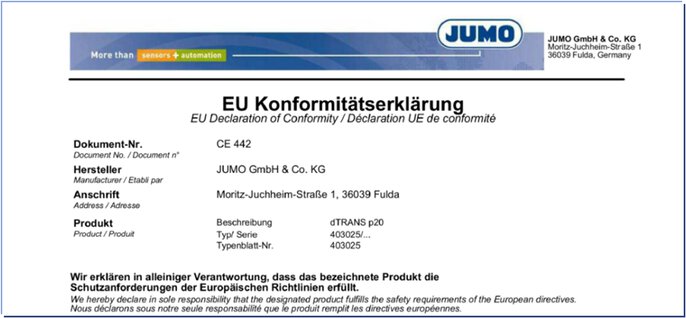

ATEX and IECEx - a comparison
In the world of industrial automation and sensor technology, ATEX and IECEx are two important certification standards that are often discussed. But what do they actually entail and what are the main differences between the two? In this article, we take a closer look at ATEX and IECEx, including a comparison of the most important aspects.
What does ATEX mean?
ATEX stands for “ATmosphères EXplosibles” and refers to European directives for equipment and protective systems used in potentially explosive atmospheres. The purpose of ATEX is to ensure safety and prevent explosive situations.
What is ATEX 114?
ATEX 114 is a European directive for manufacturers of electrical and non-electrical equipment used in explosive atmospheres. The directive specifies the certification procedure and classification of zones where explosive atmospheres may be present. Equipment conforming to ATEX 114 standards bears specific markings and meets the required safety standards.
What is ATEX 153?
ATEX 153 specifically addresses the protection of employees working in potentially explosive environments. It sets requirements for the selection and use of equipment, markings and safety regulations in such environments. The purpose of ATEX 153 is to ensure the safety and health of workers in explosive environments.
What does IECEx mean?
IECEx stands for “International Electrotechnical Commission System for Certification to Standards Relating to Equipment for Use in Explosive Atmospheres” and is an international system guideline that governs the safety certification of electrical and non-electrical equipment for use in potentially explosive environments. IECEx uses certification procedures such as IECEx 02 and IECEx 03, which ensure that equipment meets international safety standards.
What is IECEx 02?
IECEx 02 is a standard related to the conformity assessment of electrical equipment with respect to explosion safety.
IECEx 02 is thus similar to ATEX 114, but in Europe concerns voluntary certification.
What is IECEx 03?
IECEx 03 is another important standard within the IECEx system.
IECEx 03 includes:
- Requirements for competencies of persons working on EX equipment.
- Requirements for the quality system of the companies involved.
- Requirements for documentation and reporting.
- Certification by an independent IECEx certified body.
Differences between IECEx and ATEX
Subject |
IECEx |
ATEX |
Organization |
Industry representatives (manufacturers, certification bodies, end users of explosion-proof equipment) |
EU Commission (regulatory government) |
Target |
A single certificate for every explosion-proof product and service, recognized and accepted worldwide. |
Reduces trade barriers, increases safety of equipment and people. |
Validity |
Products with IECEx certification are accepted in multiple countries <br> - Alternative: ExTR can be submitted for local certification |
ATEX directive is required by law in all EU countries <br>. |
Scope of application |
Electrical and non-electrical products and systems <br> - Gas/dust industry <br> - Also applicable to services such as repair and overhaul |
Electrical and non-electrical products and systems <br> - Gas/dust industry <br> |
Standards used |
Only international standards such as IEC <br> compliance are mandatory |
Any recognized standard that meets the Essential Health and Safety Requiremens <br> compliance is not mandatory, but is commonly used for product review |
Certification Procedure |
Issued by ExCBs (for certified equipment): <br> - ExTR (product type) <br> - Ex QAR (quality audit of production facilities) <br> - IECEx CoC (certificate of conformity) <br><br> Issued by ExCBs (for certified service providers): <br> - CAR (IEC 60079-19 compliance report) <br> - FAR (facility audit report) <br> - IECEx CoC (certificate of conformity) <br><br> Online certificate of conformity <br> - Officially registered on the IECEx website <br> - Electronic CoC available as a verified version |
Issued by ExNBs <br> - EC-type examination certificate <br> - Ex QAN (quality assessment notification for production facility) |
Conformity assessment |
For IECEx certified material: <br> ExTR + QAR = IECEx certificate of conformity (CoC) <br> ExTR = IECEx test report <br> QAR = IECEx quality assessment report <br> Applicable to all products, no difference between zones or products <br> CoC <br> Self-certification is NOT allowed <br><br> For IECEx certified services: <br> FAR + competence assessment = IECEx certificate <br> FAR = Facilities Audit Report <br> Applicable to all services <br> Self-certification is NOT allowed |
Manufacturer's declaration of conformity with all required documents and reports <br> - Certificate by ExNB only for electrical equipment for category 1/2 and M1/2 <br> - Self-certification allowed for category 3 and mechanical category 2 <br> Not applicable to services |
Manufacturer's follow-up |
ExCB maintains the status of the IECEx certificate of conformity based on the results of follow-up quality audits (QARs). |
ExNBs conduct regular audits at manufacturers. |
Workshop requirements |
Not provided – refers to national regulations. |
ATEX Directive 137 contains specific requirements for personnel and management. |
JUMO certificates and declaration of conformity in ATEX and IECEx :
Type of examination certificate
The certificate is based on the examination of samples and contains information for use of the components in the Ex range:
ATEX certification
Reliable medium and ambient temperature
Information for intrinsically safe circuit
Internal capacitance and inductance etc.


JUMO certificate
EU declaration of conformity
Declaration that...
... the equipment meets the requirements of the European directives relevant standards.
... the product has been manufactured in accordance with the examination certificate.
... the manufacturer has an approved quality system.

JUMO certificate

JUMO certificate
